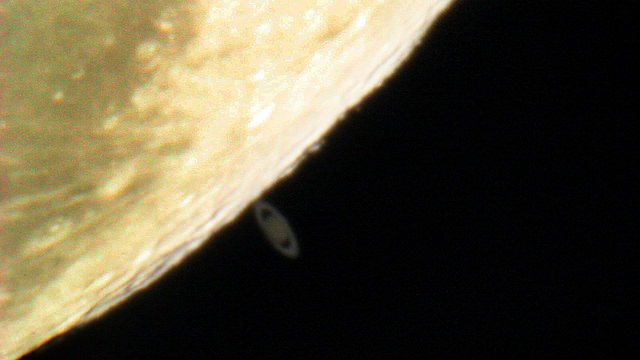Got clear skies this July 4th weekend? The Moon passes some interesting cosmic environs in the coming days, offering up some photogenic pairings worldwide and a spectacular trio of occultations for those well placed observers who find themselves along the footprint of these events.
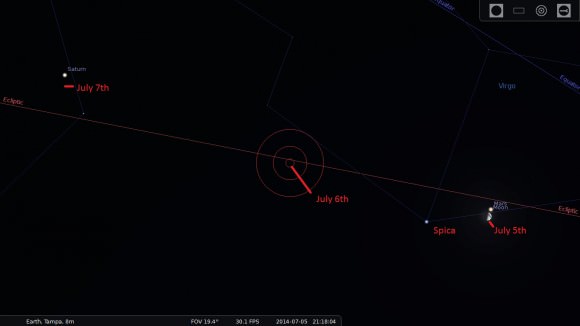
First, let’s look at our closest natural neighbor in space. The Moon reaches first quarter phase on Saturday, July 5th at 11:59 Universal Time (UT)/7:59 AM EDT. First Quarter is a great time to observe the Moon, as the craters along the jagged terminator where the Sun is just starting to rise stand out in stark profile. Watch for the Lunar Straight Wall and the alphabet soup of elusive features known as the Lunar X or Purbach Cross and Lunar V on evenings right around First Quarter phase.
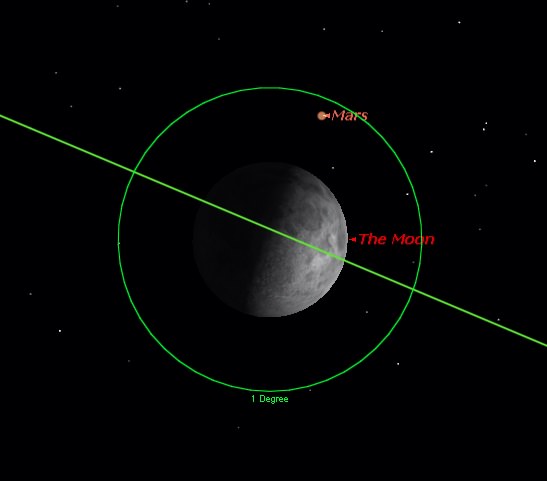
Our first conjunction stop on this weekend’s lunar journey is the planet Mars. Although the Moon occults — that is, passes in front of a given planet from our Earthly perspective — exactly 16 naked eye planets in 2014 (24 if you add in Uranus events and 1 Ceres and 4 Vesta on September 28th), the Moon will only occult Mars once in 2014, on the night of July 5th/6th. Northern South America and southern Central America will have a front row seat, while the rest of North America will see a close pass less than one degree from the lunar limb. This will still present a fine photographic opportunity, as it’ll be possible to snag Mars and the limb of the Moon in the same field of view. The Moon will be 56% illuminated during the conjunction, and Mars will present an 88% illuminated disk 9.2” across shining at magnitude +0.3.
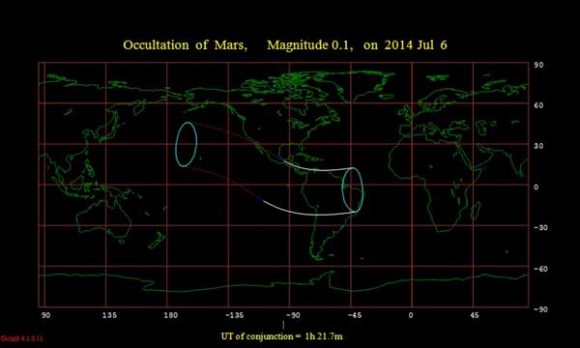
Both will be 96 degrees east of the Sun during geocentric (Earth-centered) conjunction, which occurs around 1:00 UT on July 6th or 9:00 PM EDT on the evening of the 5th. For those positioned to catch the occultation, it’ll take about a minute for “Mars set” to occur on the lunar limb. The last occultation of Mars occurred on May 9th, 2013 and the next won’t happen ‘til March 21st, 2015.
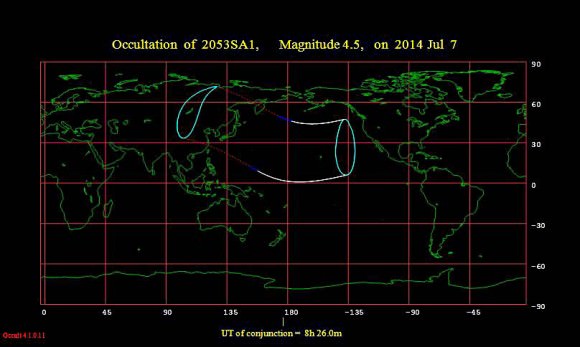
Next up, the Moon occults the +4.5th magnitude star Lambda Virginis on July 7th centered on 8:26 UT. This event is well placed for observers in Hawaii on the evening of July 6th. Located 187 light years distant, the light that you’re seeing departed the far-flung star on 1827, only to be interrupted by the pesky limb of our Moon a second prior to arrival on Earth. This star is also of note as it’s a spectroscopic binary, and while you won’t be able to resolve the pair at a tiny separation of just 0.0002” apart, you just might be able to see the pair “wink out” in a step wise fashion that betrays its binary nature. The Moon misses the brightest star in Virgo (Spica) this month, as it’s wrapped up a series of occultations of the star in early 2014 and won’t resume until 2024. Aldebaran, Antares and Regulus also lie along the Moon’s path on occasion, and the next cycle of bright star occultations resume with Aldebaran in January 2015. You can check out a list of fainter naked eye stars occulted by the Moon this year here courtesy of the International Occultation Timing Association.
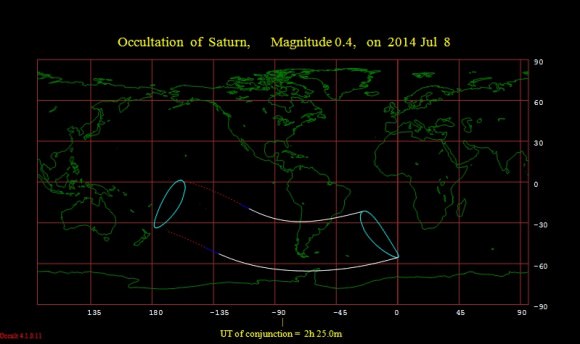
And finally, the Moon visits Saturn, now residing just over the border in the astronomical constellation of Libra. This occultation occurs just 49 hours after the Mars event at 2:00 UT on July 8th (10:00 PM EDT on the evening of July 7th) and favors observers in the southernmost tip of South America. As with Mars, North America will see a close miss, although it will also be possible to squeeze Saturn in the same field of view as the Moon at low power, though it’ll sit about a degree of off its limb. We’re in a cycle of occultations of Saturn this year, with 11 occurring in 2014 and the next on August 4th. The reason for this is that Saturn moves much more slowly across the sky than Mars from our perspective, making for a relatively sluggish moving target for the Moon. Saturn shines at +0.6 magnitude as the 75% illuminated Moon passes by and subtends 42” with rings and will take about five minutes to pass fully behind the Moon.
These events will make for some great pics and animation sequences for sure… can you spot Saturn or Mars near the lunar limb with binoculars or a telescope before sunset? Or catch ‘em in the frame during a local fireworks show? Let us know, if enough pics surface on Universe Today’s Flickr page, we may do a post weekend roundup!

